After the war, many Japanese soldiers claimed they only ate human flesh because they were starving. But in most cases, the evidence tells a different story.
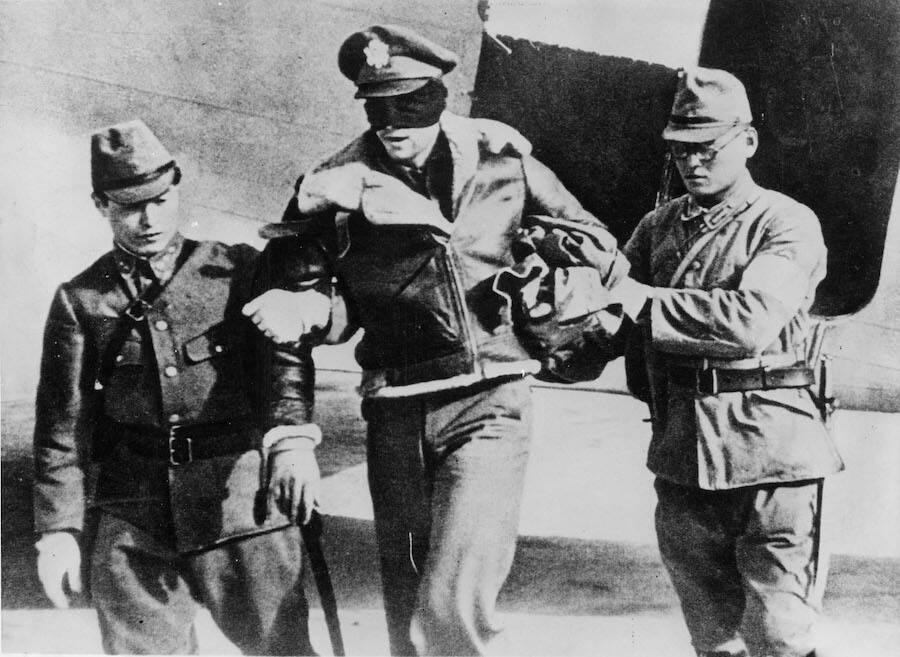
Wikimedia CommonsRobert L. Hite was a U.S. Army Air Force aviator who was captured by the Japanese in 1942. While Hite fortunately survived this ordeal, many of his comrades met a far grislier fate.
In 1945, a first-year medical student named Toshio Tono stood in the halls of Kyushu Imperial University as two blindfolded American prisoners were led into a pathology lab by Japanese soldiers.
“I did wonder if something unpleasant was going to happen to them, but I had no idea it was going to be that awful,” Tono told The Guardian in 2015. The two blindfolded men were members of a B-29 bomber team and they were already wounded after being captured. They were apparently led to believe that they’d be receiving treatment for their injuries.
Instead, the doctors began a series of human experiments as Tono looked on in horror. According to testimony later used against the doctors at the Allied War Crimes Tribunals, they injected one prisoner with seawater to see if it could be a substitute for a sterile saline solution. Other prisoners had parts of their organs removed, with one deprived of a whole lung just so the doctors could see how his respiratory system would respond.
As a young medical student, Tono’s tasks usually involved washing blood off the floor and preparing seawater drips for his superiors. He said, “The experiments had absolutely no medical merit. They were being used to inflict as cruel a death as possible on the prisoners.”
But as horrifying as these experiments were, one allegation was perhaps the worst: cannibalism. According to American lawyers, at least one prisoner’s liver had been removed, cooked, and served to Japanese officers.
Though charges of cannibalism were later dropped in this specific case, there’s no question that some Japanese soldiers ate human flesh during World War II. And sometimes, they weren’t even hungry when they did it.
A Crazed Crusade For The Truth
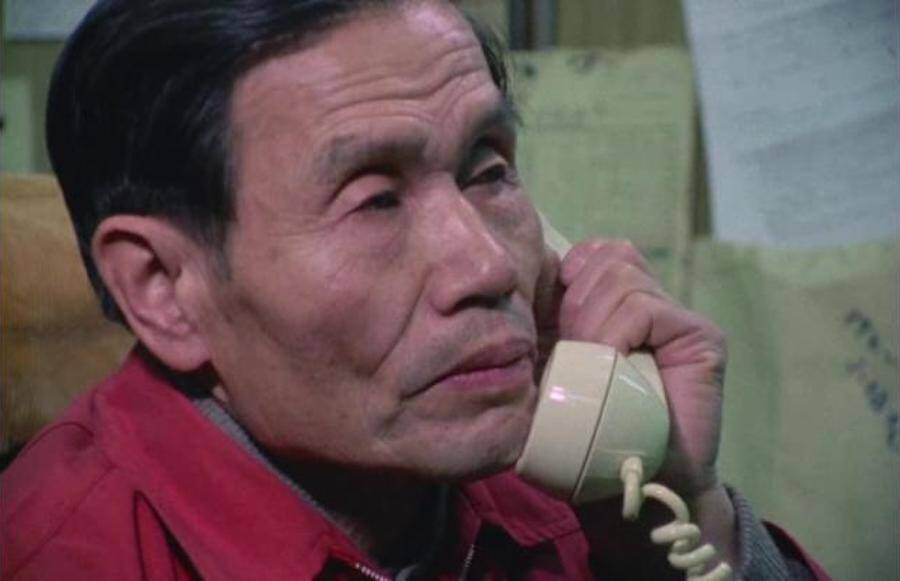
YouTubeKenzo Okuzaki became infamous for his attempt to expose Japanese war crimes in the 1988 documentary The Emperor’s Naked Army Marches On.
For some World War II survivors, exposing the truth about Japanese war crimes — such as cannibalism — became an obsession. One such survivor was Kenzo Okuzaki, an Imperial Japanese Army veteran and the subject of the 1988 documentary The Emperor’s Naked Army Marches On.
By the time Okuzaki shot this film, he had an extensive criminal record. He had already spent 10 years in solitary confinement for manslaughter in the 1950s. And shortly after getting out of prison, he had staged a bizarre demonstration at the Imperial Palace in 1969.
Firing pachinko pinballs from a slingshot aimed at Emperor Hirohito — the same emperor who had reigned during World War II — Okuzaki shouted to the ghost of a former war comrade. He yelled, “Yamazaki, shoot the emperor with a pistol!” He then turned himself in to the authorities.
As it turned out, Okuzaki took this strange action in order to pursue the emperor’s war responsibility in the Japanese court system. During his trial, he challenged the constitutionality of the emperor system and argued that the emperor was responsible for Japan’s war crimes during World War II.
Although Okuzaki’s argument was ultimately ignored, this may have been the sole instance in modern Japanese history where these questions were seriously discussed in a legal setting. He was detained for one year and 10 months, including two months in a psychiatric hospital.
The Emperor’s Naked Army Marches On focuses on Okuzaki’s continuing one-man crusade in the 1980s to expose the truth about the war — and to find out what really happened to his fellow comrades.
As a former member of the 36th Independent Engineering Regiment, Okuzaki was sent to New Guinea with 1,200 of his men to capture villages in 1943. While there, they were ordered to retreat into a dense, unfamiliar jungle.
While Okuzaki eventually made it to an Allied base — where he was taken prisoner in 1944 — he was one of only six survivors of the entire 36th Independent Engineering Regiment. He spent the rest of the war in an Australian prisoner-of-war camp before returning to Japan. But the uncertain fates of some members of his regiment never sat right with him.
The majority of The Emperor’s Naked Army Marches On is spent with Okuzaki as he travels through Japan, hunting down former officers whom he believes are responsible for ordering his comrades’ executions. In a style described by the New York Times as “psychotic,” he conducts a series of intimidating interviews — which in some cases turn violent.
As some of the former officers and enlisted men begin to open up, some suggest that Okuzaki’s comrades were condemned for desertion or for participating in cannibalism. Another grisly theory is that they were put to death so that cannibalistic soldiers could eat them.
At one point, a former soldier claims that multiple isolated soldiers were reduced to cannibalism. He says that they first tried to eat the local natives, but they were too difficult to catch. So then they attempted going after Australian soldiers on the island. Finally, they apparently turned on each other — sometimes even picking their prey based on personality.
The ultimate conclusion of what happened to Okuzaki’s friends is a mélange of unpleasant options. Either they tried to desert out of desperation, or they were executed for cannibalism, or they were cannibalized themselves. By the end of the movie, it’s revealed that Okuzaki is in prison once more after planning to assassinate one of his former army comrades and ultimately wounding the man’s son instead.
A Grisly Discovery In Papua New Guinea

Wikimedia CommonsMap of Papua New Guinea, which is nearly 3,000 miles away from Japan.
Despite the controversial nature of Okuzaki’s discoveries, many of them actually match up with historical research. Nearly half a century after World War II, historian Toshiyuki Tanaka revealed his findings in the first-ever Japanese investigation into cannibalism during the war.
Born after his home country’s defeat, Tanaka wanted to educate young Japanese people “who are not told anything” about this war crime. So in 1992, Tanaka publicly announced that he uncovered more than 100 cases of cannibalism committed by Japanese troops in Papua New Guinea.
“These documents clearly show that this cannibalism was done by a whole group of Japanese soldiers, and in some cases they were not even starving,” Tanaka said.
The wide variety of cases include the soldiers eating the flesh of Australian soldiers, Asian laborers, and Indigenous people in Papua New Guinea.
In some instances, the soldiers’ supply lines were indeed cut off and they were genuinely hungry. But in other cases, officers ordered troops to eat human flesh to give them a “feeling of victory.”
According to the testimony of a surviving Pakistani corporal — who was captured in Singapore and housed as a prisoner of war in Papua New Guinea — Japanese soldiers on the island killed and ate about one prisoner per day over the course of 100 days.
And one Indian prisoner of war said that “the Japanese started selecting prisoners and every day one prisoner was taken out and killed and eaten by the soldiers. I personally saw this happen and about 100 prisoners were eaten at this place by the Japanese.”
“The remainder of us were taken to another spot 50 miles away where 10 prisoners died of sickness. At this place, the Japanese again started selecting prisoners to eat. Those selected were taken to a hut where their flesh was cut from their bodies while they were alive and they were thrown into a ditch where they later died.”
And it wasn’t just prisoners of war who bore witness. One Australian army corporal recalled how he discovered several mutilated bodies of his own comrades. One of the bodies had only the hands and feet left untouched.
Another Australian lieutenant described finding dismembered remains of bodies as such: “In all cases, the condition of the remains were such that there can be no doubt that the bodies had been dismembered and portions of flesh cooked.”
The Sickening Story Of The Suzuki Unit

Wikimedia CommonsTwo dead Japanese soldiers in a water-filled shell hole in New Guinea. Circa 1943.
Whenever cannibalism in the Imperial Japanese Army is discussed, it’s usually in terms of survival cannibalism — either the consumption of scavenged dead bodies or the execution of prisoners and fellow soldiers for food when fresh corpses were unavailable. But as Tanaka pointed out, not every case of cannibalism was simply about the need to eat.
This is what the prosecutors at the trial of Dr. Hajime Ainoda hoped to establish while unpacking the actions taken by the members of the so-called “Suzuki Unit” in the Philippines during World War II.
Deployed to the humid mountain jungles of the Bukidnon Region in 1945, the Suzuki Unit was tasked with combating native and American resistance to the Japanese occupation of the area. At the beginning, they had some food rations. And when they ran low, they managed to forage for food and also steal some from local villages.
However, many of the soldiers got sick and died, sometimes due to diseases like malaria and other times from violent bouts of diarrhea.
One big challenge for them was the humidity. They were simply sweating too much. Every exertion they made — foraging, marching, building shelter — was costing them calories, water, and protein. The only way to save his men, Ainoda argued in his defense, was to feed them some kind of meat.

Wikimedia CommonsTwo Australian soldiers pose with human remains recovered from a Japanese encampment.
“Whenever possible, we avoided killing by eating the bodies of people who died from illness or were killed in action or were executed for crimes,” Ainoda said. However, officials were suspicious about the true motive behind this cannibalism. Their suspicions were all but confirmed by the testimony of Rikimi Yamamoto, another soldier who’d joined the Suzuki Unit.
“We frequently ate human meat as our dinner,” he testified. “Boiled it with vegetables and ate it. The meat was brought into camp by patrols who had cut it up and dressed it. Sometimes the meat was dried and sun-cured. Since no other meat was available, we had to eat human flesh. For this reason, Filipinos were captured and butchered. I was so hungry I ate it, although I would have preferred pork.”
Although Ainoda was adamant that he had no other choice, the graphic testimony from his prosecutors reads like something from a horror movie:
“When Lieutenant Alejandro Sale captured the Suzuki [U]nit, he found human bones [and] human flesh in the process of cooking, human skulls and fragments of the human body around the premises of the camp of the Suzuki [U]nit in and around the houses occupied by the members of the [U]nit and it can therefore be concluded that the killing of Filipinos and the eating of their flesh were of common knowledge to all the members of the [U]nit who were encamped together in one place…”
Ultimately, Ainoda and nine of his men were sentenced to death for their horrific crimes.
There’s no question that this description of World War II cannibalism is horrifying. But perhaps even more disturbing is the fact that some historians believe hunger was just an excuse for this behavior.
As Tanaka told one interviewer in 1992, the real motive in most cases may have been “to consolidate the group feeling of the troops.”
The Choice To Become A Cannibal
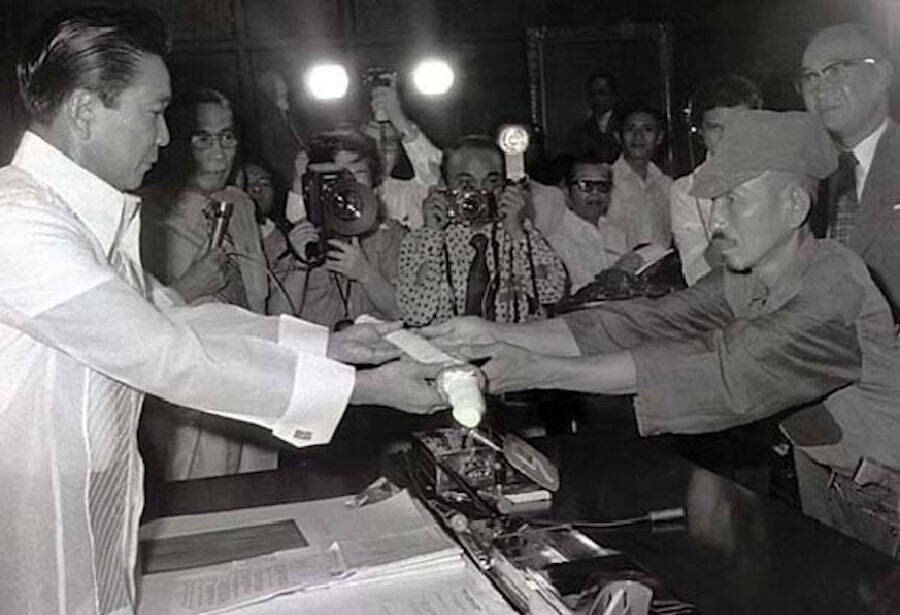
Wikimedia CommonsHiroo Onoda surrenders to Philippine President Ferdinand Marcos in 1974. The Imperial Japanese Army officer remained at his jungle post in the Philippines for 29 years, refusing to believe that World War II was over.
While many soldiers claimed they only ate human meat for survival purposes during the war, there came a point when at least some of them chose to be cannibals rather than surrender.
After all, there were some cases where isolated Japanese soldiers were able to survive in precarious situations without becoming cannibals. Perhaps the most famous example is Hiroo Ononda, a holdout soldier who managed to survive in the Philippine jungle from 1944 until 1974 by eating boiled bananas, coconuts, and occasionally stolen rice or cows.
Similarly, in at least one instance, another Japanese soldier was captured by the Allies while he was running away from his newly cannibalistic unit — so there were clearly many of them who did not want to participate. Having established that this was unusual among the soldiers, where did it come from, and why was it happening within the Japanese Army?
One particularly interesting case seems to get to the core of the matter. A young Japanese soldier confessed at a war-crimes trial that he ate the flesh of an Australian he had shot in battle “out of intense hatred and intense hunger.” Apparently, this raw seed, when watered, has the potential to grow into a series of murderous practices that are as ancient as mankind.
It’s undoubtedly true that the bloody war they were in also played a factor. Major Matoba Sueo, one of the most infamous cannibals of World War II said, “Yes, I was a madman due to the war, and that is the only reason I can give for being a cannibal.” But the cannibalism that he participated in was especially chilling — even by wartime standards.
The Gruesome Chichijima Incident
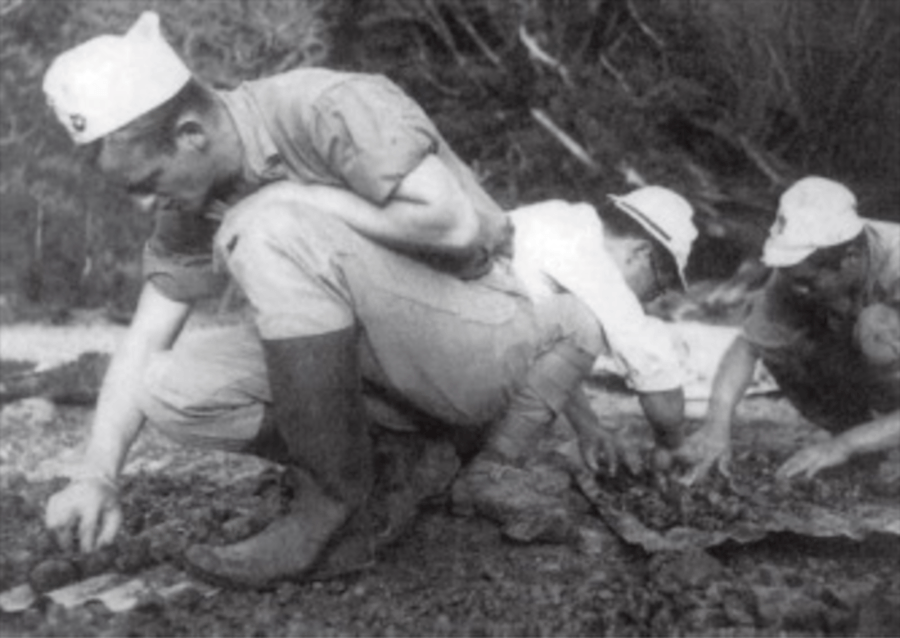
Wikimedia CommonsAmerican soldiers looking for the remains of prisoners of war killed during the Chichijima Incident. 1946.
On September 2, 1944, an American plane carrying nine U.S. airmen crash-landed above the Japanese Bonin Islands after being shot down by enemy soldiers. While all of the soldiers attempted to escape capture by the Japanese, only one succeeded: a young man named George H.W. Bush.
Then a U.S. Navy lieutenant, the future president evacuated a doomed aircraft at just the right moment and was promptly rescued by an American submarine. But his peers were not so lucky. Captured by the Japanese soldiers, the crew members were tortured, stabbed, and beheaded. And some of them were cannibalized.
In this case, the soldiers who ate human flesh definitely weren’t starving. Instead, they turned to cannibalism on the orders of Japanese Lt. Gen. Yoshio Tachibana, who had four men butchered for their livers and thighs.
As Admiral Kinizo Mori’s later testimony would reveal, a chef “had [the liver] pierced with bamboo sticks and cooked with soy sauce and vegetables.” The dish was apparently treated as if it were some kind of delicacy. And according to Mori, it was believed to be “good for the stomach.”
It wasn’t until 2003 that Bush learned that he could have been served on the same plate as his comrades.
According to the Japanese folklore, the liver is the organ of the body where courage and power dwells. So perhaps some soldiers believed that consuming the liver of a human would give them the courage and power the person had while they were alive.
After the war, at least one soldier implied that was the case. When questioned at his trial in Guam for his conduct, Major Matoba responded that he ate the human liver “to gain the strength of a tiger.”
While livers aren’t always mentioned in cannibalism cases during World War II, there are at least some stories involving Japanese officers eating human livers for spiritual or sporting purposes, including the rumored incident at Kyushu Imperial University and the proven one at Chichijima.
It’s clear that the incident at Chichijima was intentionally planned — and very detailed. What’s less clear is whether an elaborate “meal” like this one was an isolated incident. Either way, some wonder if this incident points to some kind of shared belief structure or even a “cult” within the army.
The Lasting Scars Of War Cannibalism
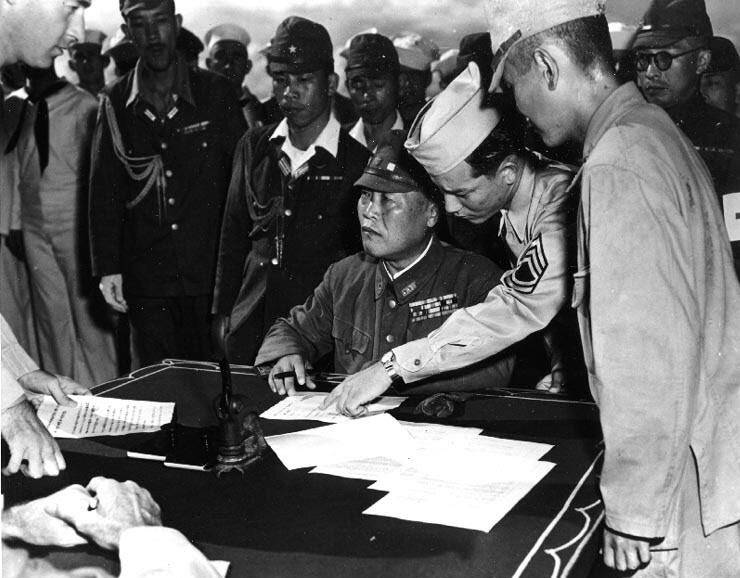
Wikimedia CommonsLt. Gen. Yoshio Tachibana was the most senior officer in the Imperial Japanese Army convicted of cannibalism during World War II. 1945.
The existence of a cannibalistic sect in the army, or at least a loose affiliation of like-minded officers, is often suggested by the evidence. According to the retelling of the Chichijima dinner in the book Sorties Into Hell, Matoba and Mori were the primary proponents of the scheme to feed the men human meat, and actively chastised them if they did not eat the liver.
As the book tells it: “Admiral Mori scoffed at his officers, reminding them that during the Sino-Japanese war Imperial troops dined regularly on human flesh, using it as a medicine to make them invincible in battle.”
Another similar incident may have played out with an American pilot captured in the Philippines. One account reports that the pilot’s liver was removed and served to the officers as their commander, Tsuji Masanobu, allegedly egged them on: “The more we consume, the more we shall be inspired by a hostile spirit towards the enemy.”
It’s unclear exactly how many Japanese soldiers participated in cannibalism during World War II. But what is clear is that enough of them did that it became one of the most infamous war crimes of the era — which Japan was eager to cover up for decades after the war had passed.
However, some soldiers did face consequences for their actions. Lt. Gen. Yoshio Tachibana was the most senior officer who was found guilty of this crime. He was later hanged for his role in the atrocities. And with modern historians like Tanaka publicizing these stories, it’s harder for government officials — and Japanese citizens — to look the other way.
It’s been said that the horrible thing about war is what it turns men into. Sometimes, though, the phrasing is “what it brings out of them.” In the Imperial Japanese Army, at least some of the officers saw something worth drawing from their troops by feeding them human flesh. Let us hope no future conflict dares to reopen this particular Pandora’s box.
After reading about Japanese cannibalism during World War II, you can learn more about the Chichijima incident — and how George H.W. Bush escaped. Then, take a look at the terrifying story of Liver-Eating Johnson.





